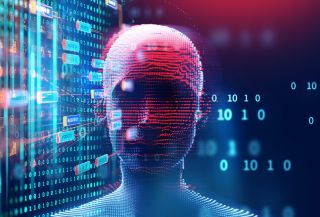Productivity
4 Steps to Digital Creation: How to Build Your Second Brain
The pathway to becoming a digital creator.
Posted January 23, 2023 Reviewed by Ekua Hagan
Key points
- The "second brain" is a home for digital information one has collected and intends to use for future digital creation.
- The "second brain" consists of a method of organization as well as a way to distill its contents, such as via note-taking.
- The concept of the "second brain" was developed by Tiago Forte of Forte Labs.

Everyone with a passion for productivity —and even those of you who just want to be more efficient and get more done— has been reading about the magic of having a "second brain.” So what is it? What will it do for you? How can you build your own “second brain?”
The second brain is the digital home you build that helps you become a digital creator.
The concept of the second brain was developed by Tiago Forte of Forte Labs. A guru of digital organization, he began his journey as a youngster, enamored with organizing his LEGOs. Years later, Forte found he needed a methodology allowing him to organize the vast amount of information he’d been collecting digitally, first around the topic of his physical health, and later as a master of digital creation, and a teacher of his methods.
The second brain is the lab in which you become a creator—using the building blocks you’ve downloaded on your computer, smartphone, iPad, or other digital devices.
The second brain is not just a library or storehouse of information. Instead, its purpose is to help you use the information you collect to create something new that you will share with others. Others might be your family and friends, or it might be the whole world.
All those pictures and stories you’ve gathered from the internet that you’ve read or think you’ll read in the future, need a home where you can find them when you need them. Your second brain is that home for everything you believe you might need when you’re writing or making something new to share with others.
What are the action steps you take to build your second brain?
There are four action steps involved in creating a second brain. Often shortened as an acronym, CODE, the action steps are: “capture,” “organize, “distill” and “express.” So what do these really mean?
Capture
Capture—or personally, I've added the word "collect"—refers to how you’ll capture things to put in your second brain. There are numerous ways to collect things digitally. You might save pictures, diagrams, and articles in a “future creation” or “future reading” app, for example in the note-maker (note-taker) apps: Evernote, Notion, Obsidian, ReadWise, or Roam Research. I usually save articles as links, or as PDFs in Evernote, ReadWise, and Notion. I save pictures I’ve captured from my computer screen in Notion, Obsidian, or Roam Research. There are numerous new “notetaker” apps to experiment with.
Organize
Organize refers to how you’ll categorize the information you’ve captured. Forte’s method, which many of us have adapted, includes four components, abbreviated as “P.A.R.A.” I’ve "para-ized” my hard drive, and the information in all the many apps I’ve been using in my daily life.
“P” refers to "Projects.” These are the projects I’m working on at the moment. For example, this post I'm writing is a “project.”
“A” refers to “Areas.” For example, one of my areas is “writing.” While I’m working on a post, it’s a “project.” When I’m done with it, it goes into the category of “writing," along with all the other posts I’ve written.
“R” refers to “Resources.” This refers to all the information I’ve gathered that I may want to refer to in the future. For example, if I read an article about how to publish articles I’ve written, I will store it in my “resources” file—on my hard drive or my note-taker app.
“A” refers to “Archive.” The archive is the home for everything that I was using or working on in the past and no longer need to have easy access to. As a professor, a class I'm currently teaching is a "project" whereas all the prior classes I've taught go in the archive.
The point of using “PARA” is to make it easy to find the materials I need as a digital creator, past, present, and future.
Distill
Distill is the third action category in my second brain and refers to what I might actually do with something I’ve captured or collected. For example, I may download and save an article about how to write a more interesting article. When I read through the article, I may take notes on it, highlight sections, or write comments about parts of the article I find most important. This is considered “distilling” the article. It makes it easy to return to the post and turn it into a "note" that—in a quick glance—allows me to see the parts that are most important or useful for me.
Express
The reason you build your second brain is to create something new. In other words, you don’t just collect things to store them—the information in your second brain is the material you will use as a creator, a builder, or an inventor. Express is the word used to reflect this process of creation.
The stories, pictures, and ideas that have found a home in your second brain are the building blocks of whatever you will be creating. I'm a psychologist, an educator, and a writer, so the materials in my second brain are the building blocks of what I’m going to teach in a class I'm planning, or an article I'm going to write.
Your second brain is the home and lab—the space you've built allowing you to become a prolific digital creator, Try it out, and experiment freely. Your second brain will become a snapshot of your uniquely organized first brain, where finally you'll be able to find the materials you need, when you need them, for digital creation.
References
Forte, T. (2022). Building a Second Brain: A Proven Method to Organize Your Digital Life and Unlock Your Creative Potential. Atria Books, NY.




